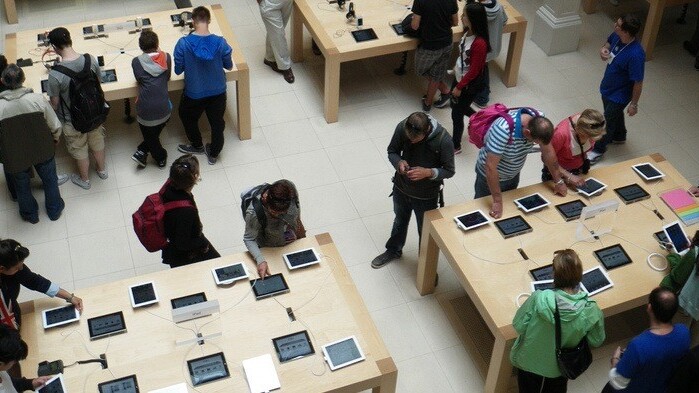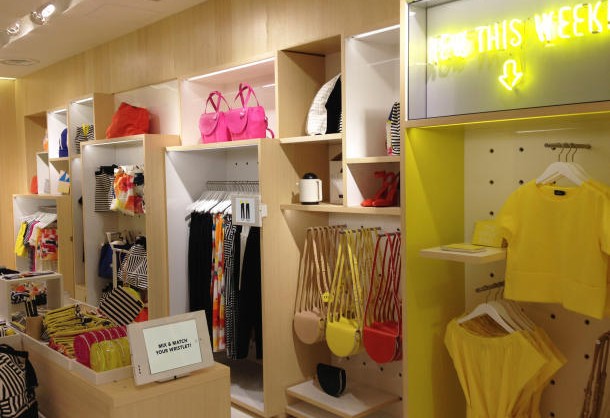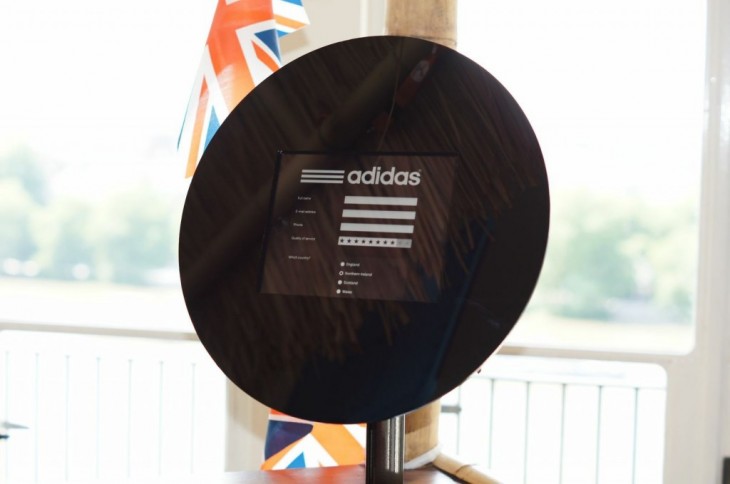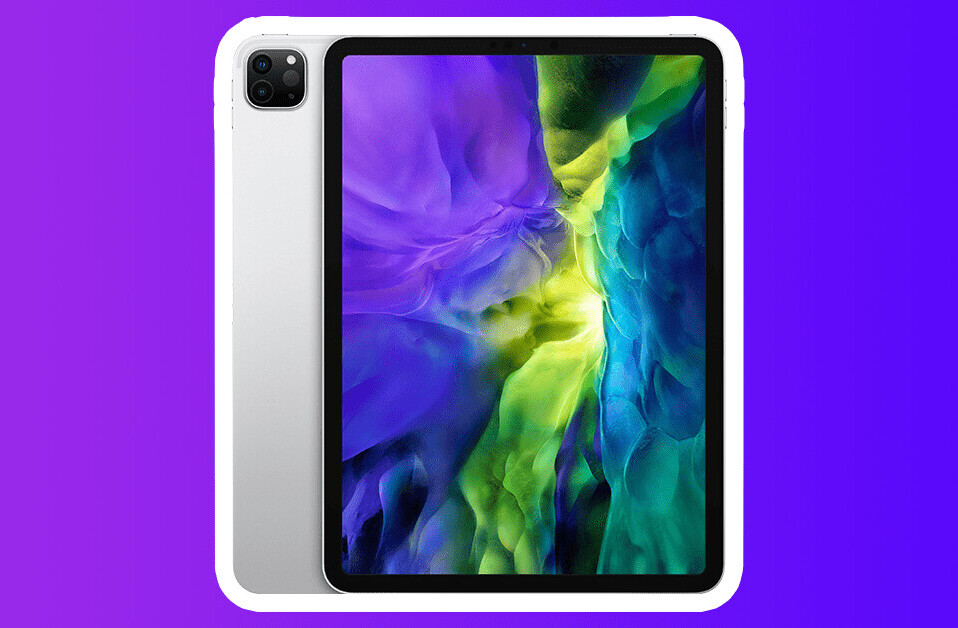
Andrew Yates is the head of iOS at Buffer, a smarter way to share your Twitter, Facebook and LinkedIn posts. You can contact him on Twitter, where he is @ay8s.
Ever since the introduction of the iPhone and iPad, people have found amazing ways to use the devices and with the arrival of iOS 7, the new iPhone devices the possibilities are only going to increase.
Apple in the past has showcased examples of its devices being used throughout the world, ranging from improving the lives of people who are blind to improving education within schools.
After a recent visit to an Apple Store I found myself using the iPad Smart Signs, which show off products throughout the store. It got me thinking about how iOS can be used to improve the retail experience further.
Interactive Displays
Apple has been working on integrating iOS within its stores for a while. It introduced iPad Smart Sign displays in all of its stores, which replaced the old cards encased in clear acrylic that used to sit alongside each product just as the iPads do today. They are used throughout the store to display product information, not just for Apple’s products but others like headphones and speakers.
As you can see in the photo above, the static displays are very limited in what they can display and convey to the customers. They aren’t interactive and you can’t easily learn more about the product unlike the Smart Signs.
Apple obviously has the benefit of manufacturing the iPads and has customised their displays to place the connector on the back of the devices used in stores to conceal the cable behind the device. You can read more about this modification here. The home button is disabled through a configuration profile to place the device into kiosk mode.
The flagship Tokyo store of New York brand Kate Spade recently deployed iPads. The store receives new shipments every Saturday with brand new products. Previously, new printed promotional materials were needed every week proving to be expensive. They replaced printed materials with iPads throughout the store alongside products. Store managers can also customise the displays in store also perform A/B testing to see which messages work best.
For Fashion Week 2011, Saks 5th Avenue store had a 64-strong iPad display installed. Each iPad was linked up via a network that synced up what each device should display. The display featured live-streamed content as well as tweets and user-submitted photos.
Taking Payments
A few retailers are already using iOS devices in stores to take payments in store. Making use of their own systems or other services like Square, which recently introduced its new Square Stand integrating its card reader into an iPad stand.
If you’ve been to an Apple Store you’ve probably seen the staff using an iPod Touch with a card reader attached, or if you’re in a country such as the UK, they also use a keypad on the back of the device to allow customers to enter their card’s pin number.
As more people tend to make use of debit and credit cards for payments, retailers can start to take payments across the store using these devices.
J.C. Penney is aiming to remove cash registers from within its stores by 2014, instead allowing customers to pay for items though various other methods including mobile checkout and self-checkout options throughout stores.
Payments are also becoming increasingly paperless, with both Apple and Square allowing you to send receipts to email addresses as well as (or instead of) receiving paper receipts.
You’re not limited to having your own devices in store for payments either, as Apple demonstrate in its stores via the Easy Pay system. It allows customers to pick up items, scan them within the Apple Store iOS app before checking out within the app and paying with cards already added to their Apple iTunes account. Once paid for you can walk out of the store, completely avoiding any queues.
Videos / Demos
Usually, videos are either displayed on huge TV displays in stores or viewed at home before a customer’s arrival at the store. Having iPads throughout the store allow for customers to view product videos and demos right there without having to do prior research or stare at a huge TV.
Ford has done this with its Showroom app that allows you to watch videos on specific features within the company’s cars. For example you can watch demos on how connectivity with iPhones works right on the iPad, allowing you to get a feel for how it works rather than simply reading a feature list.
Burberry has installed iPads in 84 stores across the world as part of its Burberry Retail Theatre, which allows the company to stream content from headquarters. It can also live stream its runway shows in real-time, after which customers can place orders.
Previously, runway items wouldn’t be available in stores for months. The use of the iPad to order items brings it down to just a few weeks, allowing customers to get the latest fashion items much earlier than previously.
Engagement
Increasingly, retailers are using iPads to allow customers to interact with brands online from within store, allowing them to build up those brands’ online following even from within stores where they don’t have their own staff presence.
You could display your Facebook or Twitter updates on an iPad, allowing customers to see you have an online presence. They’ll be able to see the latest news, as well as offers that they may have missed as they weren’t following you. Allow customers to interact with your Facebook, Twitter or other social media and drive more likes and followers for your brand. If the customer doesn’t use social media why not offer an option to opt-in to your email newsletter allowing you to communicate with customers when they aren’t in store.
Make Up For Ever, a cosmetic company, installed iPads stations within stores in Las Vegas and New York. The iPads allowed customers to update their Facebook Page and tweet about their shopping experience and tell friends and family what they were buying.
After the initial rollout of iPads, it was planned that the app would allow customers to upload or take a photo of themselves, which they could then use to create a virtual make over within store. This has since been released as a separate app on the App Store, which could also be used within stores. Once the virtual make over is complete, the user is able to share the results on Twitter and Facebook. Sharing the virtual makeover will drive further brand engagement, allowing Make Up For Ever to gain more likes and followers.
Sharing
There are situations where you don’t want to share something with all of your Facebook friends and Twitter followers. Say you wanted to share a product with a friend or family member to tell them you’d like it for your birthday, or it’d be a great addition in their home. Right now you’d have to take a photo or simply send a message to the recipient.
The Ford Showroom iPad app allows customers to share information on cars with anyone, including people who will have input on your car decision when they aren’t there with you.
One other case could be an iPad in a changing room becoming a “mirror” for you to check out the outfit you’re trying on. It could also allow you to take a photo; once snapped, you could send it to a friend to get an opinion on whether you should buy the outfit or not.
Customization
As technology improves, allowing for faster production and even production within stores, customizations are going to become more common for retailers. Various stores have been making use of iPads to allow customize products in stores, providing the customer with an iPad allows them to see what the product looks like with their customizations.
Puma recently created a “Creative Factory” in their stores allowing customers to customize trainers on iPads. Once they are happy with their trainers they can pay for them to be produced and they are delivered a few weeks later. Converse has also made use of iPads to allow customers to customise shoes before purchasing them.
Converse is also making use of iPads to allow customers to screen-print their own graphics from the company’s catalog onto footwear and apparel. Customers can also choose the colour of their footwear, laces and more.
BaubleBar, a fashion ecommerce startup with a shop in SoHo, New York City, has had a native app designed allowing customers the design, colours, materials and size of various accessories it offers. Previews of the customised jewellery are then displayed on-screen.

Like many other retailers who have integrated iPads in store, the BaubleBar offering is in its early stages and will continue to be developed and refined.
Support/Assistance
Apple’s Smart Sign iPads allow customers with questions to page store employees to get assistance with purchases. Once the support button is tapped the customer is placed into a queue and an Apple store employee will come over to help with any queries.
It does away with the awkwardness of asking someone working in the store for assistance if they are in the middle of something. They can carry on with their work and you get someone who is specialized in helping customers come over to help.
A couple of Apple staff in each store also check people into Genius appointments, allowing them to manage the crowd waiting around the Genius Bar. This is all done on iPads that allow them to jot down extra notes on their problem allowing them to save time once their appointment has started.
iPads are also being used in Banks, allowing advisors to present information to their customers without the need to use paper or force them to view a shared monitor.
“As a consumer, when you go to a bank and you have a meeting with someone you end up talking to the back of their monitor. Wouldn’t it be nice to talk to someone just holding a tablet?” – Barclays retail COO Shaygan Kheradpir, speaking to Computing last year
Barclays purchased 8,500 iPads last year to improve interaction as well as the customer experience across branches in the UK.
Ordering right from your table
From restaurants and bars to busy airport terminals, iPads have already been set up to allow customers to order food and drink right from their seats. You no longer need to wait or find a waiter to take your order. Simply pick what you want on the iPad and order.
A service called Coaster allows pubs and bars to roll out iPads throughout their premises, allowing customers to order their drinks from their table and avoid possible queues while keeping staff free to make and serve the drinks. They also offer an iPhone app to allow customers to order from their own device, although getting people to download the app can prove tricky.
Another great example of ordering straight from iPads while including many other features is the recently refitted Delta terminal in New York City’s LaGuardia airport. It now has 2500 iPads set up throughout the terminal, allowing you to do everything from reading news, to shopping on Amazon, updating Twitter, ordering food and even getting updates on your flight’s departure.
Barclays‘s Ben Reitzes recently commented that similar systems the one now set up at LaGuardia airport could be used many different places including theme parks.
“In our view, the LaGuardia example really could be emulated in use cases from restaurants to theme parks to sports venues to airplanes to customer service, in order to sell more products and enhance worker productivity. Down the road these application could even lead to advanced analytics opportunities.”
Interactive Competitions
Some retailers and brands run competitions on their websites or Facebook Page via Facebook apps. Making use of devices like iPads allow you to run similar competitions in store.
Having an iPad to enter a competition is much more enticing than piles of paper forms. Adidas recently collected over 1,000 entries when launching a competition to win a pair of boost trainers at the British Athletics Grand Prix.
Use the ability to connect to Twitter/Facebook using a follow or like as a means to entry into the competition. Once they have done they they are now connected to your brand when away from the store allowing you to increase customer engagement.
Why not make the competition even more fun by making use of the other hardware on the device like the front facing camera to include the customer through photos or video or make use of the accelerometer to create a game?
iBeacons
Apple has included a feature called iBeacons within iOS 7. They enhance location services by using Bluetooth Low Energy (BLE) which has been included in iOS devices since the iPhone 4S. Using BLE devices can be set up to introduce a new range of geofencing and location capabilities.
As mentioned above, the Apple Store app’s Easy Pay feature allows customers to scan products themselves before paying using their iTunes account. To use this, you currently need to connect to the Apple Store’s WiFi for it to detect that you are in store. Apple could shift this over to Bluetooth iBeacons around the store to detect when you enter the store, only relying on the device having Bluetooth enabled and thus removing the step requiring the user to manually connect.
iBeacons can also allow apps to detect the location of a device in a store. Allowing apps to not only welcome customers to a store when they step inside but to also display specific product information based on location. This could even be used by stores to find out the most popular sections of the store by collating the device location information and generating heat maps.
Just as iOS is improving education it will continue to improve retail experiences for customers and store staff alike. As iOS and its devices continue to develop, the possibilities are only going to increase, allowing for more innovation in stores. I’m looking forward to seeing what retailers come up with.
Have you seen any other great examples of iOS used in stores? I’d love to hear about them!
Image credits: Florian Boyd/Flickr, Caroline/Flickr, Kate Spade, Nate Burgos, Nate Burgos, AKKROO
Disclosure: This article contains an affiliate link. While we only ever write about products we think deserve to be on the pages of our site, The Next Web may earn a small commission if you click through and buy the product in question.
Get the TNW newsletter
Get the most important tech news in your inbox each week.








